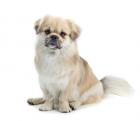Tibetan Spaniel
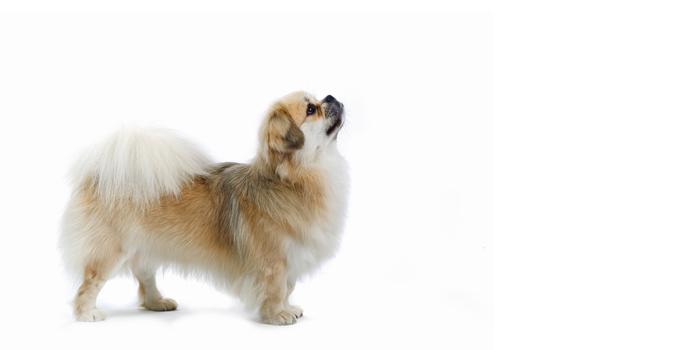
In my own words
People call my kind Tibbies, isn’t that a cute name? I think it sounds kind of like teddy, don’t you? I am quite like a teddy bear you know, I love cuddles so much. Don’t you love a good cuddle too? You can count on me for the best cuddles in the world! Did you know that Tibetan monks used to put us under their robes in winter to keep us warm? Isn’t that amazing? I love snuggling up in the warm.
My kind are really good watchdogs you know. I’ve got eagle eyes. My kind used to watch out for strangers and predators in Tibet you see, so I’m pretty good at my job. You can trust in my to let you know if there’s any trouble afoot, though I could be the trouble maker too! I can be a bit
My ideal owner(s)
Families
City dwellers
Retirees
What they say about me
Lively
Watchful
Outgoing
Alert
Protective
Please read on, to find out more about me, and whether I will be someone you can be happy with for the next 15 years, or even longer!
Is this Tibetan Spaniel for you?
Test your knowledge about the Tibetan Spaniel
Information essential about the Tibetan Spaniel
Kennel Club Group:
Utility
Category:
The Tibetan Spaniel is a member of the utility group. They were originally bred to be companions in the monasteries. Today they are still companions and are also seen in the show ring.
Size:
Small: Weight 9 – 15 lb (4 – 7 kg)
Height 10 – 11” (25 – 28 cm)
Popularity:
Breed History:
The Tibetan Spaniel originates from the Himalayas where it was bred by Lamaist monks for centuries. The breed served as a faithful companion to Buddhist monks. Called “little lions” for their toughness and watchfulness, these canines were given as special gifts to Chinese dignitaries over the years, most likely mixing with other breeds such as the Pekingese and Japanese Chin. Though primarily kept as a companion, their keen eyesight made them excellent guard and watchdogs, alerting monks to approaching strangers or predators approaching their flocks. They were much-loved companions to the monks who would place them under their flowing robes in the winter with both benefiting from the warmth created.
It is believed that the breed was brought to England in 1895 by a sailor returning from the Middle East. The breed grew in popularity during the 1920s but were almost extinct by the end of World War II. The only thing that saved them in the UK and the rest of the western world was the renewed importation of them from Tibet. A Tibetan Spaniel bitch was given to Lady Wakefield during a trip to India and gave birth to puppies in 1941 with the litter being brought to England in 1946. A second bitch was mated with one of these puppies which resulted in the foundation of the breed in England. In 1959 the number of registered had grown and the Kennel Club gave the breed Challenge Certificate status at 4 Championship Shows.
Character:
This breed makes a perfect house pet and companion. They are cheerful, friendly, playful and highly sociable with all the family. This breed is calm inside but can display clown-like behaviour when outside in its play mode. They can be wary and distrustful of strangers but are more aloof than aggressive. They are intelligent and relatively easy to train but can be stubborn particularly if their owner ‘babies’ them. Despite its cute look, this little dog is tough and adaptable
Temperament:
They are alert but independent companions and can be aloof with strangers. They are loyal to their family and friends and get on well with children and other household pets provided that they have had early socialisation.
Conformation:
This small and alert breed is slightly longer than its height. The head is delicate and small, with a dome shaped skull, pendant and dropped ears with soulful oval shaped dark or brown eyes that are spaced well apart. The muzzle is blunt and the mouth slightly undershot. Like many Spaniels, the face is very expressive and can look sad from ecstatic from one moment to the next. The tail is carried high over the back when the dog is moving and hangs slightly when at rest. The tail is heavily feathered in a fine plume. The silky double coat is of a moderate length lying flat and silky on the body, sometimes with a pronounced mane around the neck that is thicker in males than females. The front legs should have moderate bone and be slightly bowed but firm at the shoulder. The hindlegs should be well-made and strong with well let down hocks and a moderate turn of stifle. The body should be slightly longer from withers to tail than the height at the withers. The back should be level with a good spring of rib. The feet should be harelike and small and neat with feathering between the toes. Round, cat-feet are undesirable. The tail should be set high, richly plumed and carried in a gay curl over the back when in movement. When standing, it is allowed to be dropped. Movement should be quick, positive free and straight.
Coat:
They have a fairly short but silky coat with longer hair on the backs of the legs and a richly plumed tail carried over the back. Males carry slightly more coat than females, both have a mane of longer hair over the shoulders.
Colour:
All colours and mixture of colours are permissible. Tibetan Spaniels come in all colours and mixes of colour, although the most common colour is golden
Training:
This breed is intelligent and quick to learn. They can be stubborn so they require consistent training and early socialisation
Care:
This breed will do well in an apartment provided it has sufficient exercise such as at least one walk a day or a good play. The coat requires regular attention and benefits from grooming at least twice a week and even more so when it is shedding. This breed is left natural and does not have its coat trimmed or clipped.
Health:
The lifespan of a healthy individual is up to 15 years. If you buy from a reputable, responsible breeder, health problems should not occur. This breed is relatively healthy and has few hereditary conditions. It can suffer eye problems including Progressive Retinal Atrophy (PRA) which can cause permanent blindness.
Exercise:
This breed benefits from a daily walk or good play. They do not require a lot of exercise and are happy to run around the house and garden. They can be escape artists so ensure that the garden is secure for them to play in. They are keen to play and participate in more exercise if given the opportunity and relish human company.
You may also like:
If you like Tibetan Spaniels, you may be interested in breeds of the same size »
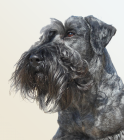

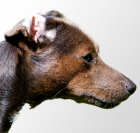


If you like Tibetan Spaniels, you may like other breeds with similar characteristics »
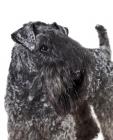
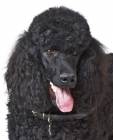
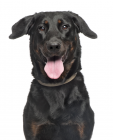


If you like Tibetan Spaniels, you may be interested in these other utility dogs »


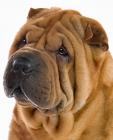


Advice on choosing your breed »
Find an animal shelter or rescue home where a Tibetan Spaniel is waiting for a new home »
The following grid gives a fast track review which covers all breeds. You can apply it to help you decide if a Tibetan Spaniel is suitable for you, the environment where you live, your personality and your lifestyle. On the grid, 1= strongly disagree, and 5= strongly agree. For example, if you are looking for a watch dog, look down the list under Role and Suitability, and you will see that Tibetan Spaniels make excellent guard and watchdogs, scoring 5. If you want a companion suited to an urban environment, look down at Environment, and you will see that Tibetan Spaniels are well suited to both urban and rural environments, scoring 5. You might like to save or print off this section and keep it for reference while you check some other breeds before making your final choice.
Be the first to rate this breed »
|
*PLEASE NOTE: All our breed profiles are general, and all dogs are individuals. Always talk to the breeders and meet the owners you are buying from. Try to meet the dog and its parents if it is a puppy in their home environment.











